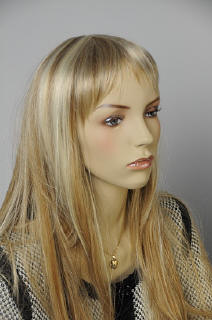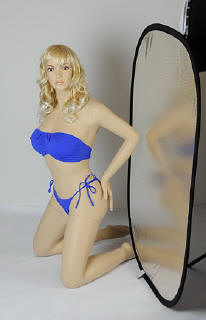Article
Studio and Flash Lighting -
Introduction
Photography under artificial light
 |
A studio can be a temporary arrangement put
up when and where required or a permanent structure, it can be small, or large,
and studios can come with everything provided or just be an empty space
to work in.
In this article we are going to look at providing lighting for
photography in the widest way we are able and from this look at more
specialist articles on specific aspects or items. So we are looking at
photography undertaken under artificial light or combined lighting.
If you are taking photos of a macro item with flash, product or food
photography under constant lighting or taking a portrait with a few lights
and reflectors then each of these arrangements is your studio on that
occasion, and the lighting involved is the studio lighting.
A lot of the
items we will be looking at will be collapsible and portable items that
allow you to turn any space into a studio for photography.
 |
Type of Lighting The first decision is the type of lighting to use.
The choices include:-
-
Tungsten or other existing room lighting (available light)
-
Tungsten photofloods
-
Cool lights
-
Mains flash systems
-
Intelligent battery powered flash systems, like the Nikon Creative
Lighting system.
Each has advantages and disadvantages.
Available light, using whatever
is in place, can lack lighting power, and can give a variety of colour
casts or variations from different lights, often with patches of light,
rather than an even lighting, but it can provide character, mood, etc. and as
its there it may be the obvious answer if you can work successfully with
it. Tungsten photofloods or spotlights, have the advantage of providing
a lot of light cheaply, but gives you a lot of heat, often making working
difficult and presenting a fire risk.
Mains flash
 has historically been the main lighting source in studios, and is an
economic and reliable way to build setups that give you a lot of light for a
brief flash, without a lot of heat. The advantages are in cost, low heat and
being able to be put together economically. The disadvantages are the
limitations in use and space a lot of these items take up. has historically been the main lighting source in studios, and is an
economic and reliable way to build setups that give you a lot of light for a
brief flash, without a lot of heat. The advantages are in cost, low heat and
being able to be put together economically. The disadvantages are the
limitations in use and space a lot of these items take up.
Intelligent battery systems
are only available for some camera makes and the
Nikon Creative lighting
 system at the moment is the unique and by far the most powerful. They have
the advantage of speed of deployments, can be used anywhere as you don't
need mains and can be mixed with just about any other lighting except
mains flash. The disadvantages are in seeing what you are taking before it's
taken, although it does have a sort of strobe preview, and it is
expensive.
system at the moment is the unique and by far the most powerful. They have
the advantage of speed of deployments, can be used anywhere as you don't
need mains and can be mixed with just about any other lighting except
mains flash. The disadvantages are in seeing what you are taking before it's
taken, although it does have a sort of strobe preview, and it is
expensive. All the artificial lighting systems can be used with
reflectors, diffusers and other attachments, that allow you to control and
modify the light. All can also be built into large systems with many
lights or kept simple.
Currently I have all of these systems but most photographers will choose one
or two. As I teach photographers its useful to have a sizable collection of
all of them, although in practice other than for teaching I usually will use
either the cool-lite system or the
Nikon Creative Lighting system.
I tend not to use available light, as
there is often not enough and I get too many different colour casts.
Tungsten floods get over the amount of light, but colour variations still
occur and there is a lot of heat to cope with. I rarely use mains flash as
there is less control and it takes a lot longer to set it up. The mains
flash is also largely a duplication of what I can achieve with the Nikon
Creative Lighting system. However don't discount it as it costs a fraction
of the price to build a mains based flash system to the Nikon system.
Modifying the Light
The artificial light that we get is hard,
harsh, produces very strong shadows and is generally stronger in the
centre than the edges. We have a number of ways of modifying the light so
that we can control the effect and colour.
Softening the light is done
by reflecting it or diffusing it. While we can change the colour of the
light by using filters, material or by using coloured reflecting surfaces.
By using masks, barn doors and funnel shaped devices we control light that
can appear in specific places.
We get the modelling effect partly from
how soft or hard it is but also from the direction and relative strength
of different lights. see
A Quick Look at the Direction of Lighting in Portraits.  |

 |
The Lighting Equipment and
Its Use
We look at the items used in studio and
flash lighting in:-
|
And at using some of these in:-
Projects/Experimental photography
|

 |
But also check the topic index and
Lighting
and Reflectors section, as more articles may have been added since this article was
written or last updated. as more articles may have been added since this article was
written or last updated.
|